“Everything we do at WeWork should be done with intent and meaning for maximum impact,” said Adam Neumann, the recently ousted CEO and cofounder of WeWork, in a 2018 blog post. “This starts with every space for every member and scales to every building in every city. In 2018, we want to have an impact on the buildings we occupy. In 2019, it will be the neighborhoods WeWork is part of, and by 2020, the cities we live in.”
This bombast was characteristic of the businessman known equally for his tequila-fueled screaming bouts and Kabbalah-enhanced executive meetings, whose oversized persona in many ways came to define the company. To meet the megalomaniacal goal of a WeWorld as well as the more quotidian needs of making flexible office spaces, the We Company amassed a large team of architects, designers, and technologists through both hiring and acquisitions. The company was itself cofounded by an architect, Miguel McKelvey, who WeWork’s recently-departed chief growth officer (and then CTO) David Fano claimed rather hyperbolically in a 2015 interview in Architect “built a lot of the original WeWorks with his bare hands.” McKelvey remains WeWork’s chief culture officer. This cultish blind faith is—or was—characteristic of WeWork acolytes.

In the wake of a botched attempt to take the We Company public, exposés on Neumann’s excessive spending, unpredictable behavior, and self-dealing, and revelations that the company was more or less out of cash and has little prospect of turning a profit in the near future, confidence has flagged, even among true believers. Once valued at $47 billion, and after an infusion of cash from SoftBank which included an unprecedented $1.7 billion “golden parachute” for Neumann to leave his post, the We Company is now worth “just” $8 billion.
WeGrow, the company’s foray into for-profit education led by the former CEO’s wife, Rebekah Paltrow Neumann (cousin to Gweneth Paltrow), will close at the end of the academic year. The fate of its other numerous side projects, such as Rise by We, a gym, and the housing initiative WeLive( which is currently under investigation in New York City for possibly illegally operating as a hotel) are uncertain. WeWork is also likely to divest from the high-profile conversion of the former Lord & Taylor building in midtown. But perhaps most distressingly, the company is expected to lay off as many as 4,000 people this fall, according to some estimates, with untold more to come. But even those plans have been hampered: the company can’t afford to pay severance. Suffice it to say, it doesn’t look like we’ll all be living in WeCities in 2020.
With WeWork shedding its properties and staff and finding itself on less steady ground day by day, what does that mean for the company’s architects? Uncertainty reigns.“It’s been disheartening to find things out through media instead of the company itself,” said one WeWork employee to AN (the company declined to comment on whether those layoffs might include architects and other design employees).
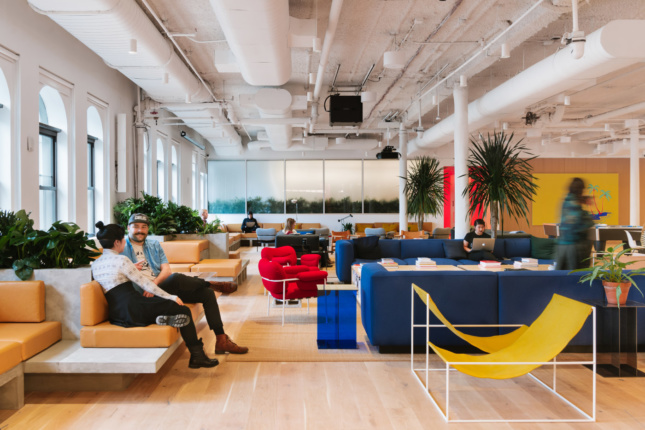
Designer Dror Benshetit, who was hired for WeWork’s “Future Cities Initiative” in partnership with Di-Ann Eisnor, formerly of Waze, has been sacked along with his team, according to current and former employees. Fashion designer Adam Kimmel, former chief creative officer, has just stepped down. Most of the architecture and technology higher-ups from Case, the design tech company that WeWork acquired in 2015, have departed in the past several months, including Federico Negro, WeWork’s former head of design, and David Fano, former chief growth officer, who left in October.
That said, architects inside the company who were willing to speak to The Architect’s Newspaper reported feeling relatively secure in their positions. Creating workspaces is WeWork’s core enterprise, and employees have noted that at conferences given by executives, the work of the architects at the We Company has been largely praised. However, the constant uncertainty and erratic nature of the business has driven many to leave the company in advance of any possible layoffs. Others are staying, some with the hope of cashing in on severance deals, not of keeping a job in the long term. “I find it sad that the person who made this business happen was an architect, but it was his business partner who ruined it,” lamented one WeWork employee, speaking of McKelvey and Neumann, respectively.
Building WeWork
Founded in 2010, WeWork’s design ambitions became clear in 2015 when the company acquired Case, a high-tech Building Information Modeling consultancy. This made sense: WeWork is more or less a real estate company masquerading as a Silicon Valley-style startup. It owns very little of the buildings it occupies, including the much-talked-about Dock 72 that just opened in the Brooklyn Navy Yards, which The New York Times reports is still largely empty. Instead, it leases spaces, then redesigns them and offers them up as flexible rentals to other businesses—from brand new startups to tech giants like Facebook and IBM to legacy publications like the Atlantic.
The biggest news was, well, BIG. In 2018, WeWork named Bjarke Ingels its “chief architect,” an unprecedented move for a company like WeWork. But it spoke to its ostensible high-minded design goals.
Ingels’s firm BIG did design the Manhattan WeGrow, as well as other projects. However, current and former employees who requested not to be named for fear of reprisal reported that most of Ingels’s actual architectural responsibilities had been delegated to Michel Rojkind, the architect who serves as WeWork’s senior vice president of architecture (Rojkind could not be reached for comment). “It wasn’t anything more than a marketing thing,” said one former WeWork employee of Ingels’s appointment. Ingels reportedly receives no salary, having opted instead for compensation in equity alone, a regrettable move in light of recent events. (Representatives for Bjarke Ingels and BIG declined to comment for this story.)
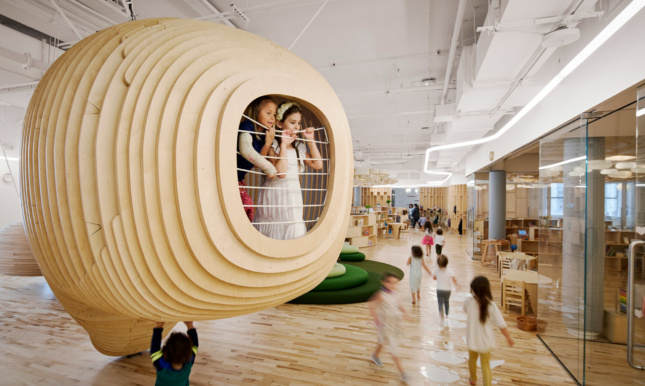
It wasn’t just notable names—WeWork hired architects, lighting designers, project managers, and other design professionals by the dozen. “There was a lot of hand-wringing early on about how many architects were leaving the industry to work at WeWork, and there was a fear that WeWork was sucking up the best architectural minds,” recalled one former employee. The company also formed another architectural spinoff, Powered by We, which brought its know-how for designing workspaces to external corporate clients, like the Swiss bank UBS. Insiders report the division has yet to turn a profit.
But despite all the present-day disorder and uncertainty, many employees are happy to stay. “I don’t want to work at a normal architecture office,” said one architect who spoke on condition of anonymity. “ As tumultuous and crazy as the year has been for the whole company, I think it’s a good thing that they disrupted architecture practice; it’s an industry that needs some disruption.”
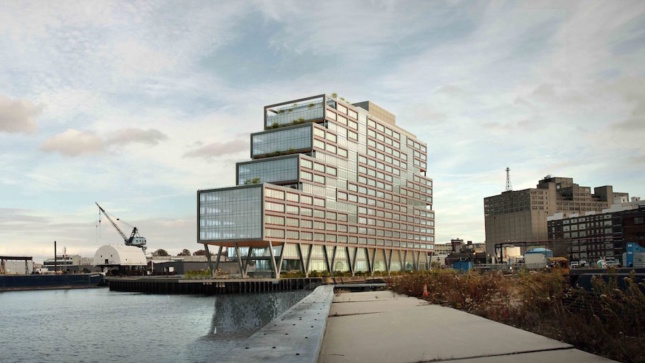
“At an architecture office you’re not encouraged to try other projects or make it better; it’s just, ‘This is the system, this is how we do it,’” the employee added. But WeWork lets architects ask, “How do we make things better rather than just following traditions?”—something they didn’t feel able to do in traditional architecture offices.
WeWork’s ability to “disrupt” architecture is due not just to some vaulted startup ethos nor its ability to pay higher salaries. Another meaningful difference is who the designers work for; WeWork is its own client. While it may work with architects of record and contractors, for the most part, WeWork’s architectural labor supply chain is vertically integrated. Everyone from the lighting designer to the architectural software engineers are on staff.
There is also a hope that former WeWork architects might bring this new perspective with them when they return to the industry and that the industry might respond, for example, by putting technology on the same level as other aspects of design. “Architects have a lot to offer, but it’s time to take risks. We need to learn to want more for ourselves and for the industry.”
Buildings = Data
Beyond all the hype surrounding the company, at least one of its divisions was living up to the Silicon Valley unicorn moniker that investors had ascribed to it. A former WeWork employee described the architectural software arm of the company as “One of the more technically advanced offices in the entire AEC [Architecture, Engineering, and Construction] sphere.” The employee went on to say, “We’ve got a pretty intelligent system around BIM, around data, around workflow and processes.” These developments happened relatively behind the scenes, though hardly secretly. WeWork regularly published blog posts about its use of 3-D laser scanning, machine learning, and data collection.
This architectural brain power, along with easy access to new BIM and parametric technology, did, in fact, give WeWork an edge in its core business: designing office spaces. It’s as a design practice that WeWork could truly be understood as an innovator. To be clear, it isn’t in the often-mimicked design aesthetic of its office spaces—with its exposed brick, neon signs, midcentury modern knockoffs, and formaldehyde-expelling phone booths. What is new is how WeWork has been able to design with tremendous efficiency at scale in part thanks to its voraciously collected user data.

Similar to the way social media companies harvest untold amounts of data on their billions of users, WeWork was swimming in data on the workers occupying its office spaces around the world. In February, some WeWork employees had begun wearing shirts that said, “Buildings equal data.” The largest office leaseholder in New York City was using data to shape everything from what buildings to rent to how to lay them out.
Through a variety of tools, WeWork was harvesting its tenants data the way Facebook exploits its users—as unwitting sources for generating new, targeted services to generate even more revenue. WeWork embedded sensors in conference rooms and phone booths, tracked “user behavior” on its app, and tested out computer vision and location beacon systems. “Imagine a conference room that can tell you how it feels, that understands what the inhabitants might be feeling,” said a company blog post that asked, “What would the Google Analytics of buildings look like?”
Last year, WeWork used virtual reality headsets and EEG brainwave monitors to see how people responded to different “vibes.” For example, “Spaces with more natural light and brighter finishes are associated with significantly higher levels of focus and interest.” While WeWork wanted to collect users’ general emotional response—one test subject described wearing the headset as “empowering”—its central interest, of course, was creating environments ideal for work. Of course, WeWork, along with tech companies and creative firms, has created a new sort of standard which other companies want. “A lot of corporate America works in environments that are stifling and boring,” said one Powered by We employee. “Retaining and hiring young staff has been hard for them. [Powered by We] is a way of changing a workplace by changing the interiors.”
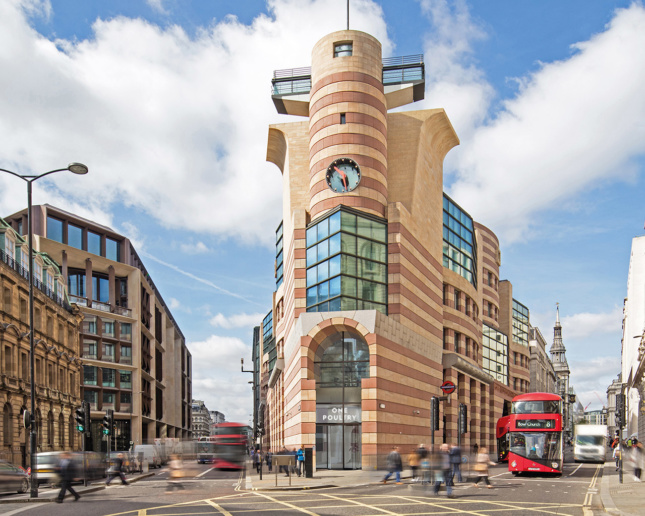
With this data, WeWork claims it was not only able to make the design and building management process more efficient and targeted, but also able to introduce new custom automation into its design of its mass-produced office spaces. They are often created from a sort of kits of parts—which included pre-determined selections of wallpaper, kitchen fittings, furnishings, etc.—inside the many buildings the company has leased, or less frequently, owned. WeWork had also developed custom software to help the company’s designers automate desk arrangements throughout their spaces. More desks means more money, after all.
Recently, in the Avery Review, philosopher Mathew Stewart referred to WeWork’s space layout algorithm as “One tool in the now endless surge of automated BIM options that aims to make the bureaucratic processes of architecture more efficient, calculable and less labor-intensive.” He added, “This produces a mystified process that hides the social and political character of design decisions. The contemporary production of architecture is a complex global web of supply chains, logistics, labor, and legal and political infrastructures.” Some former WeWork employees disputed this characterization. In a company blog, former senior researcher Andrew Heumann said that they just want to get rid of the “tasks that are the most tedious and repetitious.” However, design at WeWork was arguably a relatively simple problem, one in which automation could easily be introduced without tremendous technological innovation. Offices may be different shapes, but at the end of the day, they’re relatively consistent spaces. One Powered by We architect suggested that “WeWork Classic” architects weren’t “challenged.”
“I would assume their job is quite boring,” the employee said. “It’s just based on efficiencies.” Multiple things can be true at once.
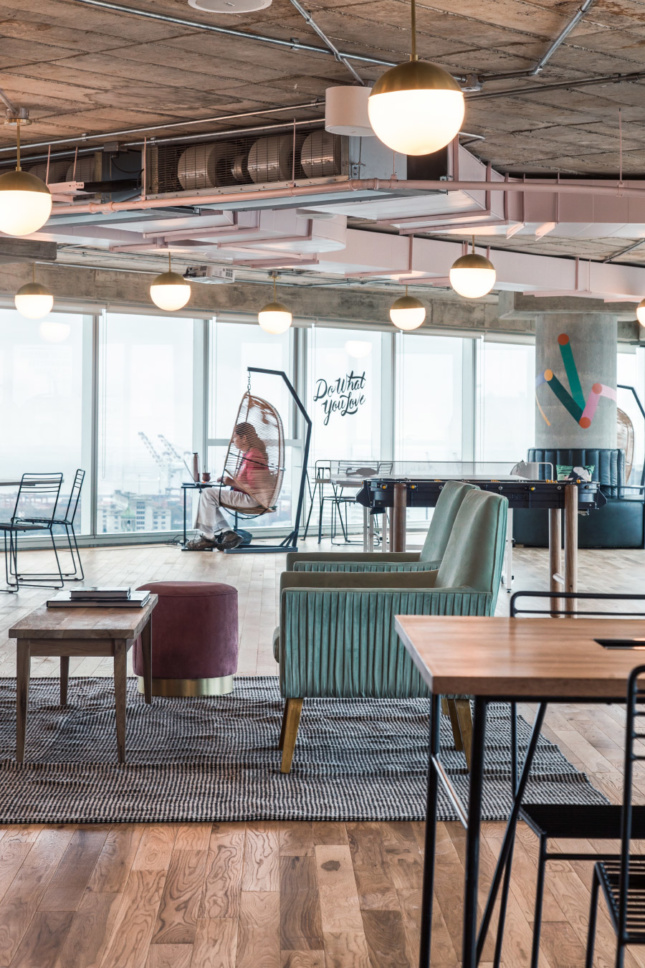
While WeWork likely overstates its technical prowess in order to boost its legitimacy as a “startup,” and while other companies also use data collection to inform design, building, and usage in their offices, its proprietary BIM tools and automation technologies may have unforeseen, significant impacts on how architects design, especially as more and more well-qualified architects, designers, and tech professionals exit WeWork to create their own startups or work at other companies or traditional firms. If expanded beyond the simple constraints of aesthetically-unified office design, new automation tools could free up designers to do more interesting, innovative things beyond building mechanics and interior layouts. Or, as so often happens under a capitalist logic consumed with “optimization” above all else, they may just cause a flattening of design difference, ushering a new Algorithmic Realism in architecture. Perhaps WeWork will take over the world after all. At least there’s happy hour.











